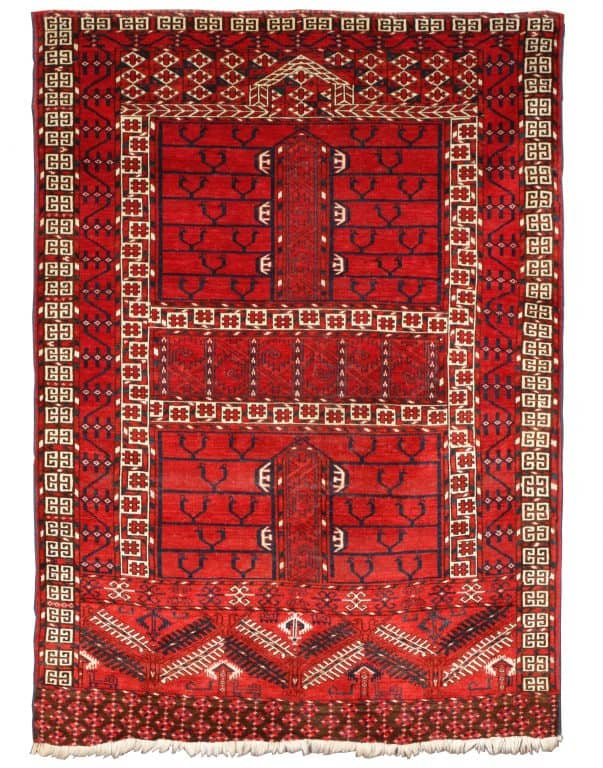Early Tekke Animal Tree Engsi
Early Tekke Animal Tree Engsi
reference:
6340
dimensions:
163 x 119 cm / 5'4''x 3'11''
Description
Rare tent door rug of exceptional colour and clarity of design made by a member of the Tekke tribe in Turkmenistan in the early 19th century.
Five rows of field ornaments form the lower field, seven rows constitute the upper field; each row is populated by alternating one and two ornaments which are clearly derived from bird head motifs called kutch (see also Pinner, Robert, and Michael Franses, Turkoman Studies I. Aspects of the weaving and decorative arts of Central Asia. London, Oguz Press, 1980, p. 143). The vertical poles separating the two left- and right-hand sections of the fields and the horizontal panel separating the upper and lower fields are decorated in a curled leaf design. The panel above the elem contains the defining element of this engsi: the pairs of animals facing each other from either side of a tree – hence the term animal tree engsi. The outer border is typical of any Tekke engsi. The main border is a meander over three parallel bars, which, according to Pinner and Franses (op.cit., p.140) is typical of animal tree engsis. Inside this main border is another border with a double-cross design, which again is not uncommon in Tekke engsis generally.
A similar, though somewhat more sombre, example of this small sub group of engsis is published in 7.ICOC (ed), Wie Blumen in der Wueste. Die Kultur der turkmenischen Nomadenstaemme Zentralasiens. Begleitkatalog zur Ausstellung im Hamburgischen Museum fuer Voelkerkunde. Hamburg 1993, no. 22, p. 49.
Wool on a wool foundation. Minor repair, overall excellent condition with beautifully lustrous wool.
POA

